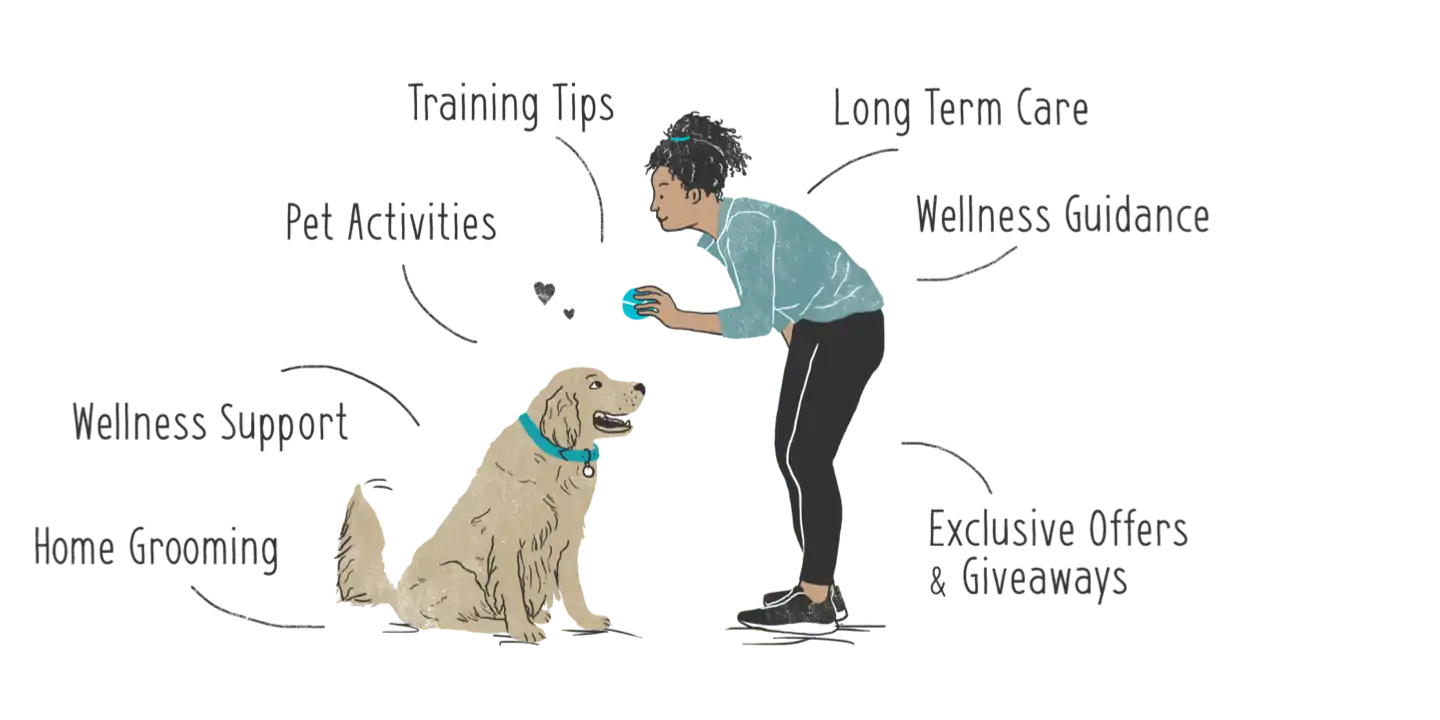
Broad-Spectrum Treatment for Your Pet’s Eye Infection*
*Federal law restricts this drug to use by or on the order of a licensed veterinarian.

Helps Treat Infections Caused by Bacteria
Terramycin is a broad-spectrum antibiotic ointment indicated to help combat a variety of eye infections, including conjunctivitis, inflamed cornea (front surface of the eye), corneal ulcer, and inflammation of the eyelids. These infections can cause pain, irritation, and irregular tear production (among other issues).
Terramycin is available from select retailers and vets.

Easy to Apply Topical Treatment
- Fast-acting dual antibiotic
- Formulated to fight common bacteria that cause eye infections†
- Effective relief for both cats and dogs
Follow your vet's exact instructions. Terramycin is typically applied 2-4 times per day. Do not stop administering medication or change your pet's dosage without talking with your vet first.
One of its main ingredients, oxytetracycline, works by blocking the ability of bacteria to produce proteins which helps them to grow and multiply.

Quickly Targets Bacteria That Cause Eye Infections
Terramycin quickly targets bacteria that cause eye infections. In a study, after applying to the eye, Terramycin concentrations in tears were higher than those needed to kill susceptible bacteria for up to 12 hours.1 Talk with your vet to see if Terramycin is right for your pet.

Vet-Approved Resources
Terramycin FAQ
Terramycin is an ophthalmic antibiotic ointment to help fight eye infections such as conjunctivitis, inflamed cornea, pink eye, corneal ulcer, and inflammation of the eyelids.
One of its main ingredients, oxytetracycline, works by blocking the ability of bacteria to produce proteins which helps them to grow and multiply. In addition, polymyxin B damages the cell walls of certain bacteria and also has some antifungal activity.
Tell your veterinarian if your pet is allergic to Polymyxin B, oxytetracycline, tetracycline, or doxycycline.
Do not touch the tube opening to any surface including eyes or hands. This medication may cause temporary blurred vision. Avoid using other eye medications unless approved by your veterinarian. Prolonged use of this medication may result in a more serious bacterial or fungal infection.
Serious side effects are not expected. Some stinging may occur. Serious, life-threatening allergic reactions in cats have been reported. Seek immediate veterinary support if your cat appears to be weak, has swelling of the face, itching, difficulty breathing, or vomiting. Talk to your veterinarian about any other side effects that seem unusual or bothersome to your pet.
It is possible that other medications may alter Terramycin's efficacy. Make sure you alert your vet to any other eye medications your pet is receiving.
IMPORTANT SAFETY INFORMATION: See full Prescribing Information. Serious, life threatening hypersensitivity (anaphylactic) reactions have been reported in some cats following application of antibiotic ophthalmic preparations. If your cat has swelling of the face, itching, appears weak, vomits, or has difficulty breathing within 4 hours of application discontinue treatment and contact your veterinarian immediately. If new infections due to nonsensitive bacteria or fungi appear during therapy, appropriate measures should be taken.
Indications: Terramycin is indicated for the prophylaxis and local treatment of superficial ocular infections due to oxytetracycline and polymyxin-sensitive organisms, including infections due to streptococci, rickettsiae, E. coli, and A. aerogenes†, such as conjunctivitis, keratitis (inflammation of the front surface of the eye or cornea), pink eye, corneal ulcer, blepharitis (inflammation of the eyelids) in dogs, cats; ocular infections due to secondary bacterial complications of distemper in dogs, and bacterial inflammatory conditions which may occur secondary to other infectious diseases in the above species.
Note: The use of oxytetracycline and other antibiotics may result in an overgrowth of resistant organisms such as Monilia, Staphylococci, and other species of bacteria. If new infections due to nonsensitive bacteria or fungi appear during therapy, appropriate measures should be taken.
†Also treats certain larger viruses that cause eye infections. There is evidence to indicate that polymyxin B sulfate possesses some anti-fungal activity.
References:
- Sigmund AB, Ward DA, Cox SK, et al. Tear film concentrations of topically applied 0.5% oxytetracycline ointment in normal canine eyes. Vet Ophthalmol. 2020;23(4):707-713


